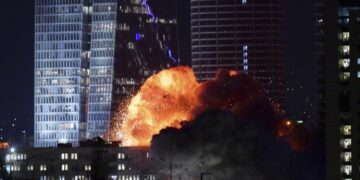India’s Directorate General of Civil Aviation (DGCA), under the direction of Civil Aviation Minister Kinjarapu Ram Mohan Naidu, has mandated comprehensive safety inspections of all domestic Boeing 787 Dreamliners following the catastrophic crash of Air India Flight AI‑171 near Ahmedabad. The crash, which claimed the lives of most of the 242 passengers and crew aboard a Boeing 787‑8, has heightened scrutiny of the fleet, though no grounding has yet been enacted .
During a press briefing held in New Delhi on June 14, Minister Naidu confirmed that eight Boeing 787 aircraft have already undergone urgent inspection. “There are 34 in our Indian fleet…eight have already been inspected and, with immediate urgency, all of them are going to be done,” he stated. Though initially cleared for continued operation, the government has not ruled out temporary grounding should the inspections reveal safety concerns.
The DGCA has ordered a one‑time, pre-departure technical review of all Boeing 787‑8 and 787‑9 aircraft equipped with GE GEnx engines in India, to be performed no later than the start of June 15, 2025. This checklist includes:
-
Fuel parameter monitoring,
-
Cabin air compressor system review,
-
Electronic engine control system testing,
-
Engine fuel-driven actuator and oil system evaluation,
-
Hydraulic system serviceability checks,
-
Verification of take-off performance parameters, and
-
A review of recent recurring technical snags
DGCA officials emphasized that these inspections are in direct response to preliminary indicators from the crash investigation. Agencies are exploring potential technical faults involving engine thrust levels, flap configuration, and whether the landing gear remained extended during departure—anomalies possibly contributing to Flight AI‑171’s sudden loss of altitude approximately 30 seconds after take‑off
BLACK BOX RECOVERY AND INVESTIGATION TEAMS
Rescue teams have recovered both the flight data recorder and cockpit voice recorder (“black boxes”) from the crash site inside a hostel block at Ahmedabad’s B.J. Medical College. Their analysis is already underway, with initial data expected within a week
The investigation is being conducted by India’s Aircraft Accident Investigation Bureau (AAIB), with support from the U.K.’s Air Accidents Investigation Branch (AAIB), the U.S. National Transportation Safety Board (NTSB), Boeing, and GE Aerospace. A government-appointed panel is anticipated to deliver a comprehensive report within three months
Prime Minister Narendra Modi visited the crash site, meeting the sole survivor—Vishwashkumar Ramesh, seated in economy class at 11A—and offered condolences to bereaved families. The crash marks India’s deadliest aviation disaster in nearly three decades, and the first fatal Boeing 787 accident since the type entered service in 2011
ONGOING RECOVERY AND IDENTIFICATION WORK
Forensic and emergency teams have recovered at least 270 bodies from the scene, including passengers, crew, and bystanders within the medical college complex. Charred remains are being identified via DNA profiling and dental record comparison—a painstaking process that is prolonging despair for grieving families
Families remain distraught as authorities continue processing remains. One particularly anguished relative lamented, “We have lost our children … we are not understanding anything. Please help us get information…”
Meanwhile, political voices, including senior Congress leader Adhir Ranjan Chowdhary, have called for judicial inquiry into the crash, asserting that “Dreamliner 787 was already having a technical snag… there should be an unbiased judicial probe”
WHAT COMES NEXT
DGCA’s intensified oversight of the Boeing 787 fleet represents a decisive, precautionary step with safety as the utmost priority. Affected airlines, including Air India (33 Dreamliners) and IndiGo (one Dreamliner), must submit inspection reports for regulatory review ahead of further fleet operations.
As the crash investigation advances, global attention is fixated on whether mechanical failure, human factors, or operational error precipitated this tragedy. With black box data en route to analysis and a government panel underway, India seeks answers and assurances to restore public trust in its aviation safety systems.








 India
India












